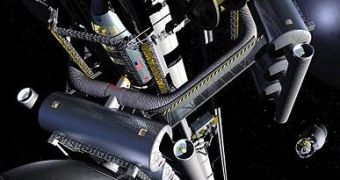The great lift currently developed by Japanese researchers is a dream come true for generations of SF authors, as it will plunge its users 62.000 miles (100.000 km) high into outer space.
The cage of the lift requires top-notch technology materials and engineering, as it will slide along 22.000 mile (35.000 km) -long cables, which will need to be built from the toughest and at the same time lightest materials, capable of withstanding collisions with space matter. The most viable approach seems to involve carbon nanotubes (fibres made of microscopic particles), which will make the material 180 times tougher than steel. One of their ends is going to be anchored on the ground, while the other is supposed to be attached to a docking station placed on a satellite on Earth’s orbit. Regarding the powering of the elevator, professor Yoshio Aoki, director of Japan Space Elevator Association (JSEA) explained, "We are thinking of using the technology employed in our bullet trains. Carbon nanotubes are good conductors of electricity, so we are thinking of having a second cable to provide power all along the route."
Aside from transporting people, the scientists plan to adapt the lift in order to carry enormous solar energy-fueled generators (which would provide power to homes and businesses on the ground) as well as to haul nuclear waste barrels and dump them in the outer space. Shuichi Ono, chairman of JSEA, stated in an interview to The Times: "Just like travelling abroad, anyone will be able to ride the elevator into space."
The project will be granted £5 billion ($9.3 billion or 6.3 billion Euros) by the Japanese government. The first time this concept was ever thought of was in Arthur C. Clarke's book, "The Fountains of Paradise," from 1979. Interested in the idea, several competitors, NASA included, got involved in similar endeavors.

 14 DAY TRIAL //
14 DAY TRIAL //